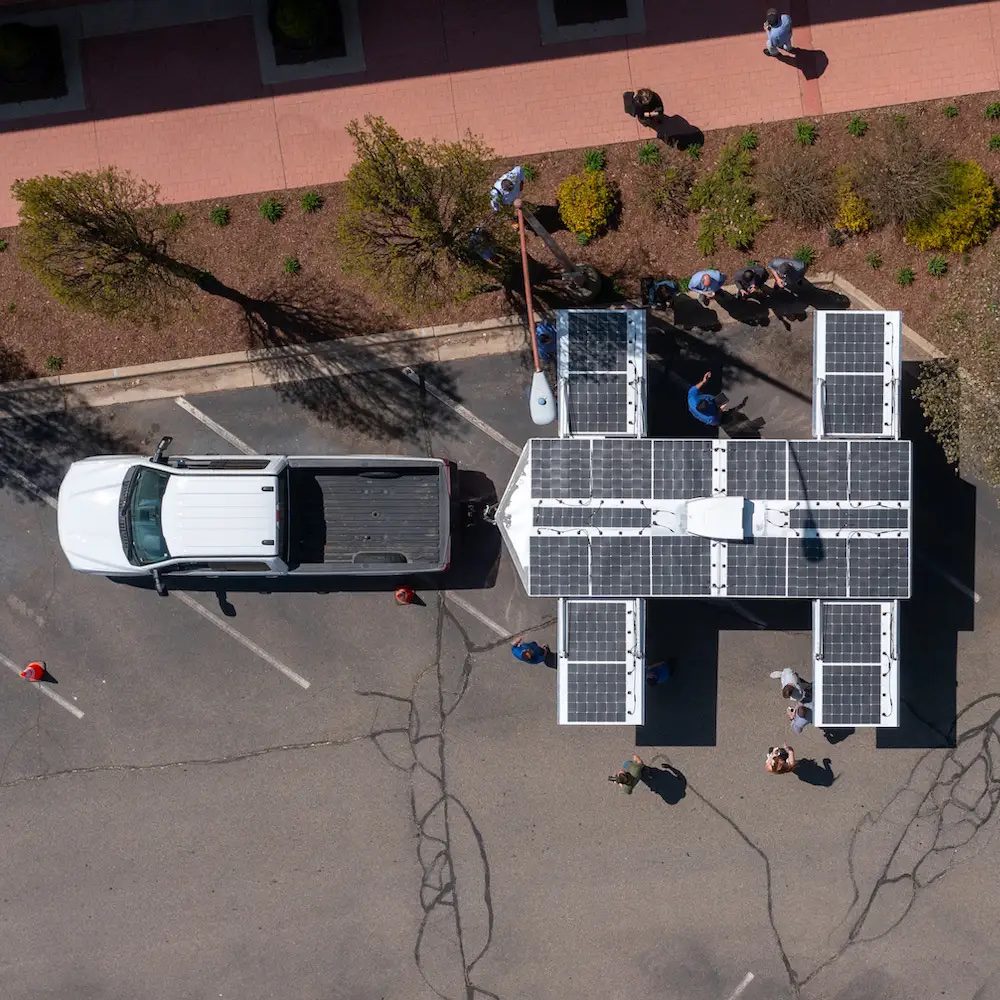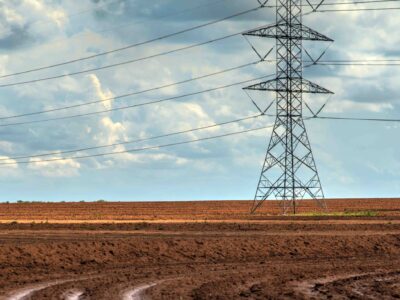Emergencies that knock out power grids require a quick response to protect people and resources. These occurrences have become increasingly common in recent years amid a rise in extreme weather events tied to changes in the climate. According to the National Centers for Environmental Information, as of November 2022, there were 15 major weather/climate disasters in the U.S. that caused tens of billions of dollars in damage.
While scientists, industry leaders, and government bodies figure out how to reverse the impact of changes to the climate, others have focused on rapid emergency response. Among the emerging leaders in this area is Sesame Solar, a Michigan-based startup that makes renewably powered, mobile nanogrids that deliver electricity to emergency sites using solar and hydrogen-fuel-cell technologies.
Sesame was founded in 2017 and unveiled its 100% renewable mobile nanogrids five years later. The systems generate clean, off-grid power using solar and green hydrogen and come prefabricated to meet essential services and emergency response needs across several scenarios. They are designed to be quickly deployed, easy to use, available anytime and anywhere, and operate indefinitely.
In addition to generating power, the nanogrids can purify water and keep communications lines open.
This kind of technology has caught the attention of investors and government agencies eyeing the next generation of sustainable and effective emergency response. Sesame has raised a combined $2 million from VSC Ventures, Morgan Stanley, Pax Angels, and Belle Capital. The company was also awarded Small Business Innovation Research grants from the U.S. Air Force, which is working with the firm on a pair of green hydrogen nanogrids to be tested by the U.S. Department of Defense.
Earlier incarnations of Sesame’s power systems have been used in previous weather disasters. After Hurricane Maria struck the Caribbean in 2018, the company deployed a pair of nanogrids to Dominica. One went to a hospital in the capital and another to a small clinic in a remote part of the island. They provided power and filtered water for local communities.
Three years later, following Hurricane Ida, the startup moved two nanogrid systems to staging areas in Home Depot parking lots in a couple of Louisiana communities.
Those systems were used for everything from charging phones to providing hot showers.
CEO Lauren Flanagan leads Sesame Solar. She co-founded the company after previously serving as a managing partner at Belle Capital, an early-stage investment fund in the Chicago area. Other co-founders are Namit Jhanwar, chief operating officer and head of solutions engineering, and Adam Kasefang, vice president and head of product manufacturing.
“As a lifelong entrepreneur, I thought I could figure out a way to make it fast to deploy and easy to set up in minutes,” said Flanagan.
Sesame Solar has succeeded on that count. Its nanogrids can be set up in less than 15 minutes. No onsite expertise is required to set up or operate the systems. And because they run on renewable energy, they qualify for 30% tax credits or direct payments as part of the Inflation Reduction Act. Those credits and payments can increase to 50% if deployed in disadvantaged communities or Tribal nations.
“Our nanogrids are changing the trajectory of the effects of climate change while providing communities in distress with the power they need to access critical resources,” Flanagan said. “While we can’t stop hurricanes or wildfires from happening, we can create solutions that help communities recover efficiently without causing further damage to the environment.”





